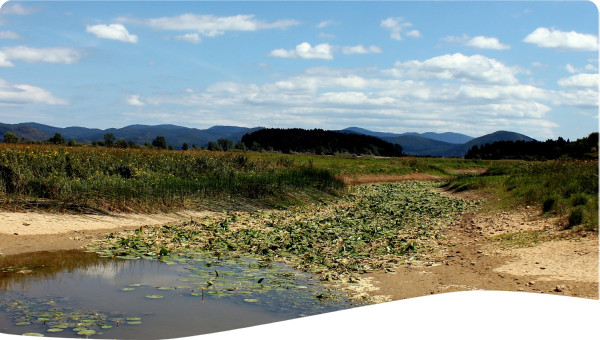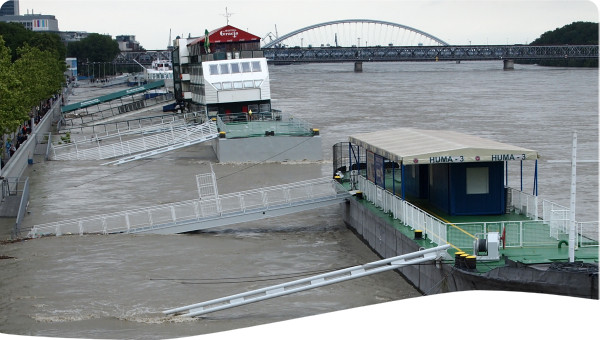Flood risk in the Indus Basin is high, due to increasing settlements and ecosystem degradation. In spite of that, the basin lacks an appropriate flood policy, comprehensive laws, adequate flood-control infrastructure, or a clear response authority. This case study describes the measures undertaken by the Pakistani Government to improve flood management, both structural and non-structural ones. This case illustrates experiences gathered with implementing IWRM.
The Indus River is a major transboundary river in Asia with nine tributaries. The River is about 2,800 km long, with 2,682 km located in Pakistan. The Indus drainage basin covers an area of about 1,140,000 km2 stretching from Afghanistan through China, India, and Pakistan. Monsoonal rains are the most important flood-causing factor in the Indus basin, followed by the size, shape, and land-use of the catchments as well as the conveyance capacity of the corresponding streams. The monsoon rains fall from June to September, and are generally intense and widespread. More than 138 million people in the Indus basin in Pakistan depend on irrigated agriculture for their livelihoods, with the cultivated area covering about 14 million ha in the floodplains of the river and its five main tributaries. Problems such as rising population have manifested in a continuous degradation of ecosystem services and have resulted in increased flood risks. This situation is further exacerbated by inadequate flood planning and management. Between 1950 and 2010, 21 floods occurred in the basin causing cumulative direct economic losses of about 19 billion USD (in 2010 dollars). The devastating 2010 super flood caused the highest damage of all in terms of economic costs; about 10 billion USD. The Government of Pakistan has been relying on traditional flood control approach based on structural measures, but the 2010 flood exposed the inherent weaknesses of this approach. The Indus Basin lacks an appropriate flood policy, comprehensive laws, and adequate flood-control infrastructure. To date, no approved national water and flood policy exists, and too many institutions are involved when disasters occur. Considering the large basin area and scale of flooding, rescue and relief operations have been inadequate. During the 2010 flood, there were also problems in operational decision-making at the field level.
The Federal Flood Commission (FFC) developed and implemented three 10-year national flood protection plans between 1977 and 2007. The three plans implemented a total of more than 1,200 flood protection schemes. These plans included actions such as:
- the execution of flood-protection schemes; and
- the procurement and installation of a flood-forecasting system and floodplain mapping.
A fourth 10-year national flood protection plan is being prepared by the national government which will take into account other aspects such as climate change. Every year, before the onset of the monsoon, all provinces, in relation to their river jurisdictions, as well as the federal government in its field of operations, conduct a pre-flood planning exercise to review the conditions of major river infrastructure such as reservoirs, barrages, and levees, and decide on advance actions to prepare for an effective response to probable floods. Flood preparedness planning ensures that:
- the flood forecasting and early warning system is functional;
- community-based early warning systems are in place for the issuance of timely and effective flood warnings;
- strict vigilance is exercised and sufficient resources are deployed to strengthen critical levees and barrages;
- safe havens are identified in case evacuation is required;
- emergency relief supplies (food, fodder, and medicine) and temporary shelters are arranged;
- transport for evacuation is made available; and
- rehearsals and drills are conducted.
The report of Asian Development Bank (2013) describes the measures undertaken by Pakistani Government, both, structural and non-structural ones. A study shows that a shift from traditional flood management to a contemporary holistic approach which incorporates an integrated water-resources management framework can more effectively mitigate the flood risks, and provide an additional source of freshwater for productive use.
In the Indus Basin, many challenges exist at the operational level that can only be overcome through better governance, effective institutions, and conducive legislation. Good governance should effectively implement socially acceptable regulations, ensure that there are no conflicts of interest, and assign responsibility. Legislation on flood management should thus define institutional roles and responsibilities, determine and protect rights and obligations, and provide a mechanism for dispute management. It may be guided by well-acknowledged principles such as the equitable and reasonable use of watercourses, avoidance of significant harm, and the protection of the ecosystem. The institutions responsible for flood management should also provide dispute settlement mechanisms. The involvement of more than a dozen organizations during and after floods has so far been advantageous. But proactive and integrated flood management requires a full-time, basin-scale, and effective organization that could prepare and implement flood policy, lay down a plan for the Indus Basin, implement effective interventions, and coordinate efforts to minimize flood risks.
A coherent system for IWRM planning is still inadequate and hence the implementation of interventions has not been effective to a greater degree.
Flood design limits: structures such as levees, barrages, and bridges can only provide protection and safety from floods to their design limit . Therefore, engineering solutions should be applied in combination approaches that integrate land and water management.
The government’s flood management planning was rarely mainstreamed into its development policy, and too little attention was paid to linkages among floodplain resources; livelihood generation; and the risks affecting floodplain populations, particularly their vulnerability due to widespread poverty.
 Case studies
Case studies

